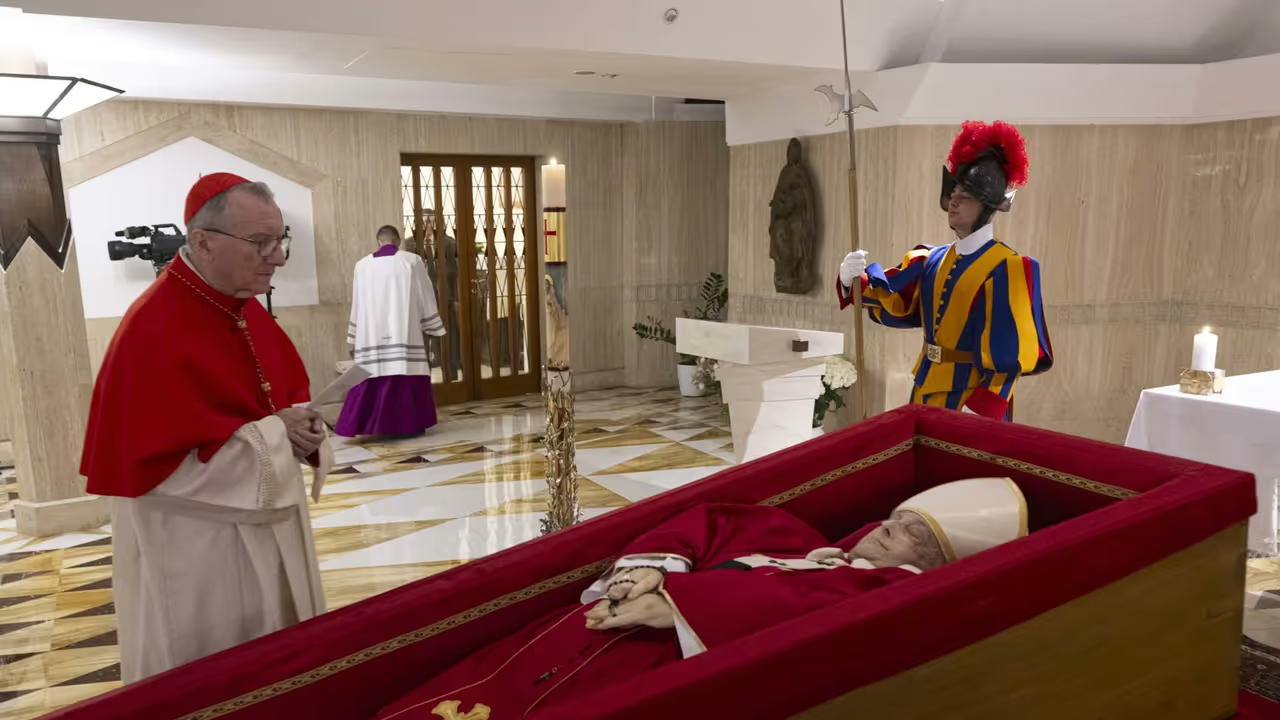The Vatican has begun the solemn process of laying the pontiff to rest — a process steeped in centuries-old Catholic tradition and modern embalming science.
As the world mourns the passing of Pope Francis at the age of 88, the Vatican has begun the solemn process of laying the pontiff to rest — a process steeped in centuries-old Catholic tradition and modern embalming science. His death, caused by a stroke and subsequent irreversible heart failure, was confirmed by the Vatican on Monday morning. The announcement set in motion a series of elaborate ceremonial and scientific procedures that will culminate in the Pope’s burial on Saturday.

The Pope’s embalmed body will lie in state at St. Peter’s Basilica for three days, drawing hundreds of thousands of mourners from around the globe. He will then be interred not within Vatican walls, but in the Basilica of Santa Maria Maggiore in Rome — a rare choice last seen a century ago.
Confirming the death immediately after the Pope's passing, Cardinal Kevin Farrell, the Vatican Chamberlain and temporary administrator of the Church, conducted a traditional ritual by calling the Pope’s name three times at his bedside to formally confirm his death. The Pope’s apartments and private office have since been sealed. In keeping with Vatican tradition, his papal "fisherman's ring" was removed and ceremonially smashed to prevent its misuse.
Embalming and preservation Given Rome's humid spring weather, embalming is essential to preserve the Pope’s body during the public viewing. This process — a blend of science and reverent care — typically takes two to four hours and is not intended to simulate life but rather to ensure a peaceful, dignified appearance.
Science of how Pope Francis will be embalmed: Step-by-step
The embalming begins with sanitisation, washing the body with disinfectants to eliminate bacteria. Rigor mortis is softened by massaging the muscles, and the face is prepared: plastic caps keep the eyelids closed, and the jaw is wired shut or supported to maintain a serene expression. Any facial hair is shaved, the hair is styled, and the Pope is dressed in traditional red papal robes with a white mitre.
Internal preservation Arterial embalming, a method refined since the 18th century, is central to the process. Blood is drained through the jugular vein while a preservative solution — usually a mix of formaldehyde, alcohol, dyes, and water — is pumped into the carotid artery. This preserves the tissues, restores natural skin tone, and prevents decomposition. In some cases, hypodermic embalming is used to treat specific areas under the skin that need additional attention.
Cavity embalming follows, in which internal organs are punctured and drained using a suction device. A formaldehyde-based chemical replaces the removed fluids, preventing gas buildup and further decay.
Restoration for viewing if necessary, restoration techniques are applied to correct any disfigurement. Wax and cosmetics are used to refine features and ensure a calm, composed appearance — especially important given the sheer number of mourners expected to pay their last respects.
Historical context Modern embalming of popes began in 1914 with Pope Pius X. Prior to that, older methods included removing internal organs, anointing the body with oils and herbs, and sealing orifices with wax and cotton to slow decay. Pope Francis, while embracing modern embalming, will also be honored through age-old Catholic rites, symbolising the continuity of tradition even in death.


